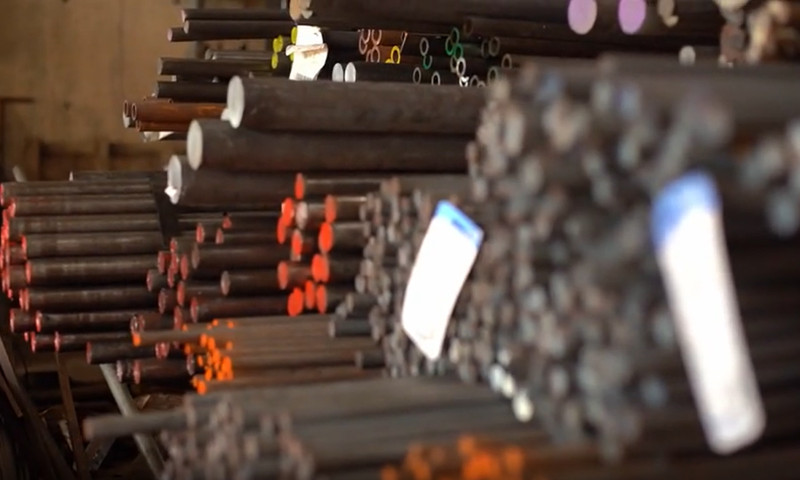
The ‘EN’ commonly found in grades of steel stands for Emergency Number. This came about from the need to reduce confusion and aid clarity when planning manufacturing and production during World War II in what was known as the War Emergency Numbering. In 1941 the British Standards Institute with the help of members of the steel industry formed a standardised group of 58 steel specifications from the hundreds that were in use from various producers. These steels made up the British Standards Schedule BS970 and although many are now obsolete, there are several which are still in use today.
The original 58 were made up of carbon, alloy, case hardening, spring and stainless steels. These were numbered according to carbon content with EN1 being the lowest C% to EN55 containing the highest. Generally speaking, EN1-3 were known as the low-carbon steels and were therefore easier to machine and form so were often used for construction, pipes and general purpose. EN5-16 were referred to as medium carbon steels and used in large parts, forging and automotive applications whereas the higher carbon steels, EN19-36, were hard wearing with high tensile and yield strengths, so mainly used for things like tools and large load-bearing purposes. The most common spring steels were EN40-45 and EN56-58 were the three stainless grades listed.
In 1955, BS 970 was revised to incorporate nearly 200 steel grades in total with letters being added as sub-categories of already existing grades. For instance, EN1A is still in use today and is used to describe free-cutting steel such as 11SMn30, whereas EN3B is what is often referred to as mild steel and covers such equivalents as 1018 or S235.
A further update to the nomenclature was made to include more information so that grades of steel could now be expressed in the form of three numbers followed by a letter and two more numbers. The first three digits represent the steel type as follows:
000 to 199 – Carbon manganese steel, number shows the manganese content. (x100)
200 to 240 – Free cutting steel, the 2nd and 3rd digit represents the sulphur content. (x100)
250 to 299 – Silicon manganese steel.
300 to 499 – Stainless steels and steels resistant to heat.
500 to 999 – Reserved for alloyed steels.
The single letter is one of four designations, A, H, M or S:
A – The steel is supplied to a chemical composition as attained from a chemical batch.
H – The steel specification is ‘hardenable’.
M – The material is produced to certain mechanical properties.
S – The steel is stainless in specification.
This is often manifested in the material test certificate, for instance steel with an ‘M’ may only have mechanical properties given but lack any chemical composition and vice versa for steel with an ‘A’ in its name.
The last two numbers represent the average material carbon content. (x100)
Sometimes a further letter can be added to the designation when a certain heat treatment condition has been applied. A common example of this would be alloy steels that are often required in ‘T’ condition which is typified by a hardness in the range of 250-300BHN. Using this guide, you will be more familiar with grades such as 230M07 (a free cutting steel with a sulphur content of 0.30% and carbon content of 0.07%) or 080A15 (a mild steel with 0.8% manganese, carbon 0.15%) and will find these grades often used in place of the less informative EN1A or EN3B respectively.
Have a look through our alloy and carbon ranges and you will see we are well stocked on the EN1A, EN3B, EN8, EN16T and EN24T grades. We also supply to order so next time you have a requirement for any steel grade, be it an “EN” name or otherwise, be sure to get intouch with us and we will do our best to supply you.
